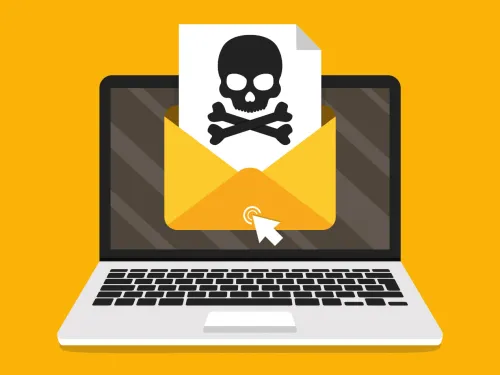Email has become a ubiquitous form of communication in the modern age, connecting people from all over the world. But with its convenience comes the risk of cyberattacks, including email-borne viruses. Hackers and cybercriminals are always looking for new ways to exploit vulnerabilities in email security systems to infect computers with malware. In this article, we'll discuss how to check your email for viruses and how to protect your inbox from these threats.
How Do Email Viruses Work?

Email viruses, also known as email-borne viruses, are malicious programs that are transmitted via email attachments or links. When the attachment is opened or the link is clicked, the virus infects the computer, allowing hackers to steal personal information or take control of the system. Email viruses can also spread to other computers by forwarding infected emails to other contacts in the victim's address book.
Common types of email viruses include Trojan horses, worms, and ransomware. Trojan horses are disguised as harmless files, while worms can replicate and spread on their own. Ransomware encrypts the victim's files and demands payment for their release.
How to Check Your Email for Viruses

Fortunately, there are several ways to check your email for viruses and other types of malware:
1. Use Antivirus Software
The most effective way to protect your computer from email viruses is to install reputable antivirus software. Antivirus software scans your email attachments and messages for known viruses and other malware before they can infect your system. Some popular antivirus software includes Norton, McAfee, and Avast.
2. Enable Email Scanning in Your Antivirus Software
Most antivirus software includes an option to enable email scanning. This means that the software will automatically scan your incoming and outgoing emails for viruses and other malware. Be sure to enable this feature in your antivirus software settings.
3. Use Email Filters
Many email providers offer filters that can block emails containing suspicious attachments or links. Check your email provider's settings to see if this feature is available and how to enable it.
4. Don't Open Suspicious Attachments or Links
The easiest way to avoid email viruses is to not open suspicious attachments or links. If you receive an email from an unknown sender or with an attachment or link that seems suspicious, delete it immediately without opening it.
Protecting Your Inbox from Email Viruses
Preventing email viruses is not just about checking for viruses; it's also about protecting your inbox from potential threats. Here are some additional tips:
1. Use Strong Passwords
Use strong, unique passwords for all your email accounts. Don't use the same password for multiple accounts, and avoid using easily guessable information such as your name or birthdate.
2. Keep Your Software Up to Date
Keep your computer's operating system, antivirus software, and email program up to date with the latest security updates. This will help protect your system from known vulnerabilities that hackers can exploit.
3. Be Cautious with Public Wi-Fi
When using public Wi-Fi, be cautious about accessing your email account. Public Wi-Fi networks are often unsecured, which means that hackers can easily intercept your emails and other sensitive information.



